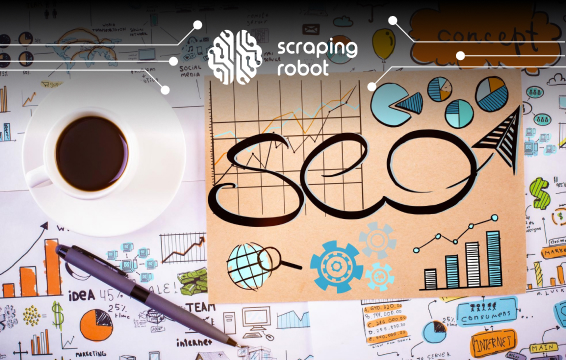DIY SEO (4 More Tips And Techniques For Your Success)

Hiring a professional to optimize your web pages for you can be costly. Frankly, learning new things is fun! (At least, that’s what the TV show “Barney” taught me as a child.) By taking SEO into your own hands, you’re not only growing your skillset as a marketer, but you’re investing time into something that can bring remarkable success with your brand. There are many aspects, but breaking them down makes things a lot less intimidating than you think. The methods of DIY SEO are all here for you to utilize!
If you’re new to the topic of SEO web scraping and want even more insights, you can also check out our previous article on the subject. Feel free to skip around using the table of contents so you can better familiarize yourself with SEO automation tools such as web scraping.
Table of Contents
1. SEO & Content Scraping: Explained
2. 4 DIY SEO Optimization Techniques
SEO & Content Scraping: Explained

The first step to becoming an SEO pro is to know the ins and outs of what it is and the best tool to supplement it!
What is SEO?
Wikipedia defines SEO as “the process of improving the quality and quantity of website traffic to a website or a web page from search engines.” In short, SEO is what determines what results Google presents to you. It targets the ‘natural’ results or those that people will seek out and choose themselves. The latter would be directly linked to a page to learn more about a topic or keyword.
What is web scraping?
Web scraping (also known as content scraping) is the automated collection of public data from websites with a bot, sort of like a replacement for manually searching and recording data yourself.
Web scrapers are directed to seek out information for you from specific sites or even through broad searches. After the web scraper has found all the relevant information to deliver to you, it prepares for extraction. When the data is extracted, it is transferred into a document, such as a spreadsheet. This data is organized into categories for you, so analysis and seeking out specific data points is a breeze!
4 DIY SEO Optimization Techniques

There are various ways you can increase your SEO, but here is a great starting point for anyone! Scraping Robot’s Google Scraper is a great resource to start with any of these steps. By choosing one or many keywords to gather results on, our scraper will deliver the top 100 results to you.
Step 1: Keyword research
The first step to basic SEO optimization is to find the words or phrases that your target customers use when searching for what you do. You can do this by asking questions such as:
- How would you search for a product like yours?
- How would others describe your product or service?
- What key attributes of your product/brand are popular?
You should have a reasonably good idea of a starting list, but utilizing a web scraper to seek out this data for you can save a lot of time. When you understand these phrases, people are using, it’s essential to take hold of them to start integrating that into your content creation process.
By web scraping these keywords with our Google Scraper, you can understand how specific keywords are used in context and are the most prevalent in competitor content. You can also ensure that keywords within your list are not too difficult to understand that people are searching for them in search engines.
Step 2: Create pages optimized for search
The next step after you have the research is to create pages or content optimized for SEO. Examples of optimizable web pages of your brand could be:
- Home page
- Blog posts
- Product pages
One important thing to remember is not to clog your pages with unnecessary uses of keywords. Google will read your web page’s language and can list your page as hard to read or not well-informed enough. Google also can seek out the relevant, related language of your keywords and topics, so staying smart and on topic is essential!
Another thing to remember is to keep it simple. You want your page to be visually pleasing and use simple language that anyone can understand. Speaking from personal experience, if a web page is too difficult to understand, I will find another one that will explain things in a much more straightforward way.
The way your page is presented in the search engine is another thing to consider, too. By writing captivating titles and equally impressive meta descriptions, you can draw more people to you. A meta description is the summary block of text underneath the title of a web page in a search engine if you are unfamiliar.
Step 3: Fix any site issues
Another big turn off to visitors are sites that don’t work. Ensuring that your site is optimized for any device to visit is essential, or people will forget you quickly. Google can analyze how long people spend on your site, and if you are seeing data on people not staying long on your site, it could be an indication of an issue.
Step 4: Build links
By linking your site back to others around the web, you will begin to build credibility in the eyes of the search engine. This requires more work, but Scraping Robot’s Google Scraper could be an excellent way for you to comment and build up links to your site around the web. This could be on forums such as Quora or Reddit, or other places where people on the web speak or ask questions about your industry.
DIY SEO: Things You Should Be Scraping

While implementing your SEO strategy is simpler than you think, it requires a lot of data to supplement your decisions. Here are some categories of data you should scrape to help assist you!
Organic Keywords
As I spoke earlier about keywords, scraping keyword data that your competitors are ranking can be extremely useful in crafting your content. Their blog posts’ metadata will highlight what sorts of keywords they’re targeting, and web scrapers can seek these out and deliver them to you.
Another point of information you can scrape is their PPCs (Pay-Per-Click) ads. A PPC is a digital marketing method that advertisers will buy, and then pay a fee every time someone clicks the link. It’s a way to override ‘organic’ visits and pay for your visits. Recognizing what sites are using these can prevent you from potentially using a strategy that doesn’t promote the organic visitors that you’re seeking.
Here you could begin using our Google Scraper to seek out keywords, and then use our HTML Scraper to search more in-depth.
Potential influencers
Finding guest bloggers for you to write content for you is a great strategy to boost visitors. But, reaching out to influencers isn’t always easy, as they can be busy or uninterested in guest writing. Your comment section on your blogs/replies to your social media posts are an excellent resource for seeking out guest writers.
By web scraping your commenter’s public contact information, you can have a list of contacts to reach out to. This has the potential to have more success rather than cold-emailing a list of people. These people were already interested enough in your blog/organization to comment. They may be more inclined to write for you.
This can be an especially great opportunity for you if they already have a significant following on their blog or social media posts. Names can bring added trust to your site, too, depending on their credentials.
Recognize the best performing categories
Analyzing data on how your content performs is important, but seeking out the categories of content that excel above the rest is even more critical. You can scrape data regarding your shares and what social networks people share and how many visits your pages are getting (organic and through links) to help you understand this.
Once you’ve gathered all the data surrounding your content, you can rearrange and find a more niche environment for you to move into. This is also dependent on what metrics you want to see increase. If you’re looking at boosting your SEO, you should focus on the posts with the most organic visitors from search engines.
Gather data for your web content
Lastly, web scrapers are great resources for research surrounding blog posts. By gathering and sourcing data from reliable sources, you will be seen as more admirable by search engines. Data is the backbone to inform others, and web scraping can help ease your content creation process rather than manually collecting all the data yourself.
Using Scraping Robot as an SEO Automation Tool

Another great feature of our web scraper is the ability to automatically run crapes every 60 seconds. This ensures you are continually receiving the most up to date information in your market to speed up your SEO strategy.
We offer 5000 free scrapes a month for you to get started and comfortable with our services. If and when you run out of free scrapes, our pricing page gives you an exact price of the additional scrapes you’ll need to DIY SEO.
Final Thoughts
To DIY SEO, it takes a thorough investment of your time in collecting data and analysis, but data collection doesn’t have to be the hard part here. Scraping Robot is here to collect your data for you so you can spend your time on SEO strategy to start gaining the organic visitors you need and growing your brand!
The information contained within this article, including information posted by official staff, guest-submitted material, message board postings, or other third-party material is presented solely for the purposes of education and furtherance of the knowledge of the reader. All trademarks used in this publication are hereby acknowledged as the property of their respective owners.
